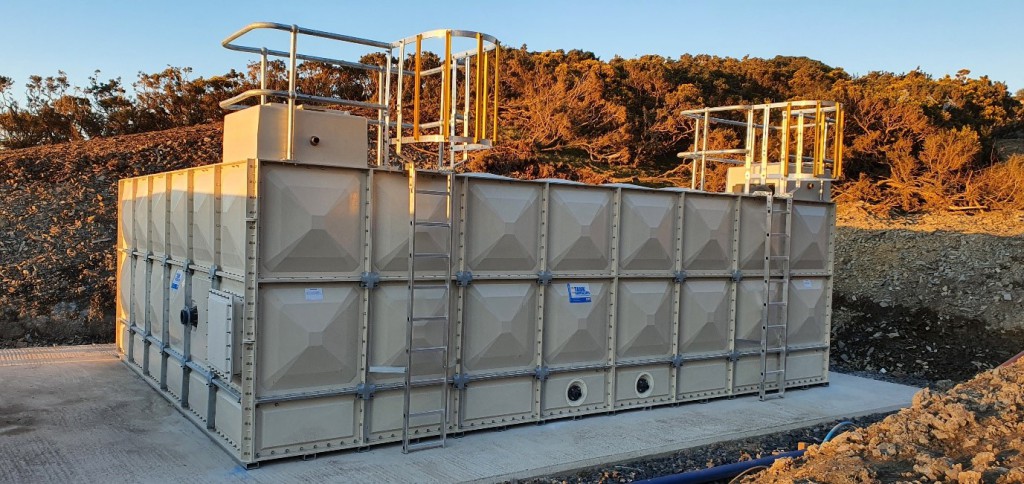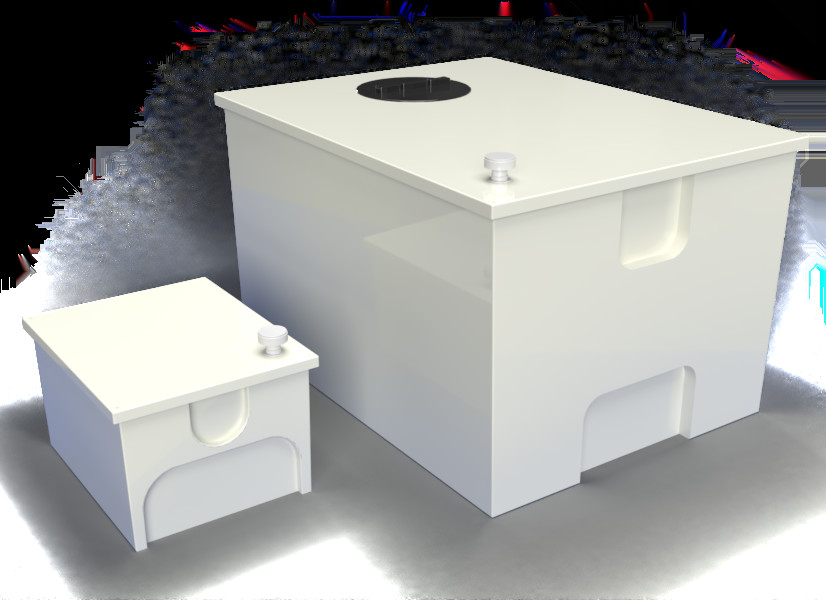Stay cool

As modern infrastructure changes and water usage and demand evolve, efficient and reliable cold water storage solutions become increasingly critical. Cold water storage tanks consistently supply potable and non-potable water for domestic, commercial and industrial uses. Here, Tricel provides a helpful guide to enhancing cold water storage in modern infrastructure.
Cold water storage tanks play a pivotal role in modern water management systems.
They ensure a steady water supply, mitigate pressure variations and provide a buffer during peak demand or emergencies. Properly maintained tanks also preserve water quality, preventing contamination and ensuring safety for all uses.
Tricel manufactures and supplies water storage tanks to meet diverse needs, ensuring efficient and safe water management across various applications and industries.
The benefits of an insulated water tank
These tanks ensure optimal water conditions year-round by reducing heat transfer between stored water and the external environment.
- Energy efficiency: Reduces energy consumption by maintaining stable water temperatures.
- Prevention of heat loss: Essential in cold climates to avoid freezing and potential tank damage.
- Condensation reduction: Prevents moisture build-up, reducing the risk of mould and structural damage.
- Extended tank lifespan: Consistent temperatures minimise stress on tank materials.
Selecting the right cold water storage tank
Understanding the variety of available tanks can help select the most suitable option for specific applications. The primary types include sectional, one piece, Totally Internally Flanged (TIF), and sprinkler tanks, each offering unique benefits.
Consider capacity, space constraints and intended use when choosing a cold water storage tank. For potable water, tanks must comply with Regulation 4(1)a, ensuring they are safe for drinking water storage.
Capacity requirements
A thorough assessment of both current and anticipated future water needs is required. This involves analysing usage patterns to establish a baseline consumption rate.
Factors such as the number of occupants, types of activities and peak usage times all influence water demand. For future planning, consider any expansions or modifications to the building or its operations that could increase water consumption.
Ensure the tank size can accommodate demand fluctuations. A tank that’s too small may lead to shortages during peak demand. In contrast, an excessively large tank can result in unnecessary costs and potential water quality issues due to prolonged storage.
Space restrictions

Measure available installation space. Consider the dimensions of the area where the tank will be installed, access points and potential obstacles. In situations
where space is limited, TIF (Totally Internally Flanged) tanks, are built from the inside out making them ideal for areas with restricted access or limited installation space.
Regulatory compliance
Every region has specific water storage regulations to ensure public health and safety. These regulations may cover tank construction, installation practices and maintenance requirements.
Compliance with regulations and standards is critical for ensuring the safety and effectiveness of cold water storage systems.
In the UK, the Water Regulations Advisory Scheme (WRAS) and Regulation 4(1)(a) of the Water Supply (Water Fittings) Regulations 1999 are pivotal in maintaining water quality and system integrity. BS EN13280 covers requirements and test methods for cisterns used in buildings, ensuring structural integrity and water quality.
Locations
- Basement plantrooms: Plantrooms typically have the space to accommodate sectional tanks.
- External buildings or GRP enclosures: GRP enclosures are often built on-site, and if the space is tight, internally flanged tanks are the go-to solution.
- Building rooftops: Rooftops demand tanks that can withstand varying weather conditions while maintaining structural integrity.
- Loft spaces within buildings: Loft spaces often present challenges due to limited headroom and space. A small, internally flanged sectional tank would be ideal for this confined space.
Maintenance and longevity
Proactive maintenance is crucial for maximising the lifespan of cold water storage tanks. Regular cleaning, inspections and prompt repairs prevent contamination and structural issues, ensuring continuous and safe water supply. BS6700 specifies the design, installation, testing and maintenance of services supplying water for domestic use.
Regular cleaning
- Schedule periodic cleaning to remove sediment and prevent bacterial growth.
- Use appropriate cleaning agents and follow manufacturer guidelines.
- Inspection of Components:
- Check valves, bolts and seals regularly.
- Address any signs of wear or damage immediately to prevent leaks.







